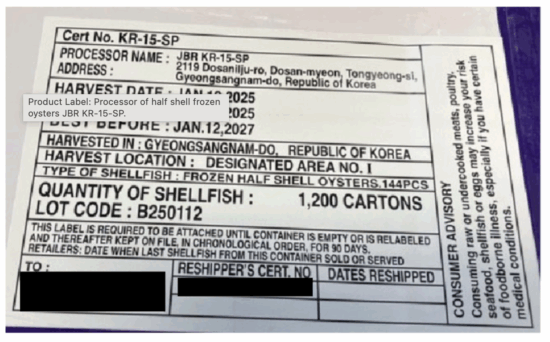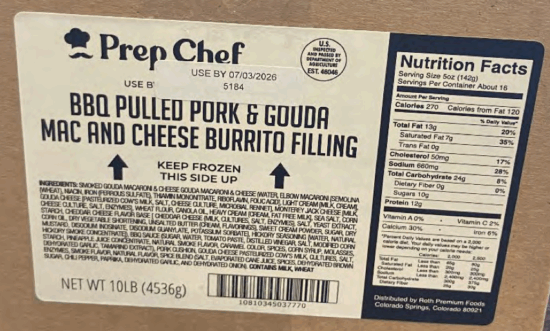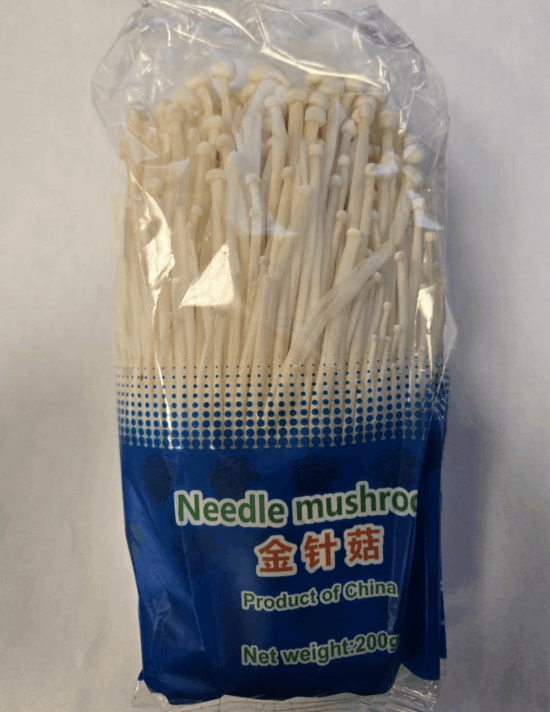In a second update, the FDA has identified more oysters from the Republic of Korea that should not be sold or eaten because of norovirus contamination.
The Food and Drug Administration was first notified of the problem when the Utah Department of Agriculture reported that an outbreak of norovirus infections had been traced to certain frozen oysters from the Republic of Korea.
In an initial warning, the FDA identified oysters from the Republic of Korea with Lot Code: B250112 harvested from Designated Area No. 1 in the ROK on Jan. 12, 2025, and processed by JBR KR-15-SP in Tongyeong-si, ROK. The oysters were recalled by Wang Globalnet of Vernon, CA on July 21, 2025.
An update to the initial warning was posted by the FDA on Aug. 11, warning against the sale or consumption of frozen half-shell and individually quick frozen oyster products harvested between Dec. 30, 2024, and Feb. 6, 2025, from Designated Area No. 1 and processed by JBR KR-15-SP. The frozen, raw, half-shell oyster products include Lot Codes: B250103, B250106, B250112, B250114, B250119, B250121, B250123, and B250130. The frozen, raw, IQF oyster products include Lot Codes: B250108, B250116 and B250206.
Now, in a second update, the FDA is warning against the sale or consumption of frozen half-shell oysters and other individually quick frozen oyster products harvested between Feb. 7, 2025, and Aug. 7, 2025, and processed by JBR, KR-15-SP. With these additional harvest dates, the product of concern is all half-shell and IQF oyster products harvested between Dec. 30, 2024, and Aug. 7, 2025, and processed by JBR, KR-15-SP.
Frozen oysters have a long shelf life and there is concern that the implicated oysters may still be in freezers at retailers, restaurants and consumers homes.
About norovirus infections
Food and beverages contaminated with norovirus may not look, smell or taste bad, but it can cause severe illnesses.
Symptoms of norovirus infection may include severe vomiting and/or diarrhea, nausea, muscle aches, fever, and headache. Symptoms typically start 12 to 48 hours after exposure and can last for one to three days. Most people recover without treatment, however some may need medical attention for dehydration.
People with norovirus infections can spread the infection easily to others. The virus can live on surfaces for long periods of time.
To prevent others from getting sick always wash hands carefully with soap and warm water after using the bathroom or changing diapers. Use soap and water to clean toilets or other areas that may be soiled with stool or vomit. Hard surfaces can be disinfected with 1/3 cup household bleach mixed with one gallon of water – always wear gloves when handling bleach-based cleaners.
(To sign up for a free subscription to Food Safety News, click here)



